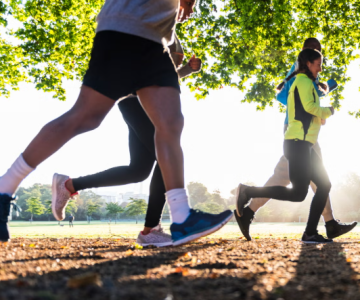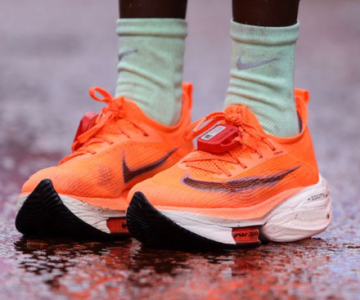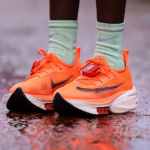In recent years, running shoe technology has shifted significantly toward increasing cushioning. What started as a gradual improvement has now led to the rise of shoes with very high stack heights. But as these shoes become more popular, concerns about their benefits and potential drawbacks are also growing. Let’s break down the science, and explore whether these cushioned shoes are right for you.
The Rise of Maximal Cushioning
With the surge in popularity of “maximal” or “max-cushioned” shoes, it’s clear that many runners are increasingly drawn to shoes offering extra comfort. These shoes are designed with thick layers of cushioning to provide a softer landing, reducing the impact on your joints. As the cushioning trend grew, World Athletics, the sport’s governing body, introduced a regulation to limit stack heights in competitive shoes, especially for elite runners. Despite this, some brands still push the boundaries to offer shoes with higher cushioning, going beyond the 40mm mark.
High Stack Shoes: The Key Players
Many major brands have embraced the trend of high-stack shoes, creating models specifically designed to cater to runners seeking maximum cushioning. For example:
- Adidas Prime X: With an eye-catching 50mm stack height, Adidas introduced this shoe as a road racing model. It gained attention for exceeding the World Athletics’ limit, making it a standout.
- Brooks Ghost MAX: A higher stack version of the popular Ghost model, offering more cushioning to provide comfort and support.
- On Cloudeclipse: With a 37mm Cloudtec cushioning in the rearfoot, this model became a favorite for everyday training.
- HOKA Cielo X1: HOKA, the brand that pioneered maximal cushioning, introduced this shoe with a 39mm stack, bringing it closer to the 40mm limit while maintaining a responsive feel.
Stack Height Regulations
It’s important to note the specific rules governing stack heights in competitive shoes. For shoes to be eligible for elite races, they must not exceed 40mm in stack height. However, brands have found ways to “bend” these rules, with models like Mizuno’s Rebellion Pro 2, which has a midsole exceeding the 40mm mark but complies with regulations due to the placement of the measurement.
The Science Behind Cushioning
Some studies suggest that added cushioning helps with recovery, allowing runners to bounce back quicker after hard training. Shoes like the Nike Vaporfly Next% are praised for reducing fatigue and providing a more comfortable run. However, not all research agrees. Some studies indicate that high-cushioned shoes may increase impact forces, which could raise the risk of injury. The idea is that the cushioning could encourage over-striding or heel striking, leading to stress on various joints.
Injury Risk and Proprioception
More cushioning can make a shoe feel protective, but it can also affect your body’s ability to sense the ground (known as proprioception). This might result in less stable footing and an increased risk of injury, particularly for inexperienced runners who might overstride or misstep. Additionally, high-stack shoes tend to be less stable, which can lead to issues for runners with less experience or those who overpronate.
Responsiveness vs. Cushioning
One major aspect of running shoes is their responsiveness – how well the shoe bounces back with each stride. While softer foams are common in cushioned shoes, they may not always offer the responsiveness needed for efficient running. Softer shoes compress under pressure, which means your muscles work harder to compensate for the lack of spring. It’s like running on soft sand versus firm ground; the soft surface may feel comfortable but doesn’t provide the same propulsion as a firmer one.
Some brands, like Saucony, have combined soft cushioning with a carbon plate in models like the Kinvara Pro. The carbon plate helps stabilize the shoe and maximizes the benefit of the cushioning, creating a balance between softness and responsiveness.
Should You Use Max-Cushioned Shoes?
Max-cushioned shoes can be a great choice, especially if you’re looking for extra comfort, but it’s important to ease into them. Gradually incorporating them into your routine allows your body to adapt to the extra cushioning. For example, switching from a Brooks Ghost 15 to a Brooks Ghost MAX might be a smooth transition, but it’s essential to build up mileage slowly to avoid injury.
It’s also crucial to remember that while these shoes may feel comfortable, they are not a “magic bullet” that will give you effortless miles. You still need to put in the work, and your muscles and cardiovascular system will benefit from consistent training, regardless of how much cushioning is underfoot.
Final Thoughts on Maximal Cushioning
Maximal cushioning has its place, but it’s not the right solution for every runner. Whether you’re recovering from a hard run or looking for a comfortable training shoe, these high-stack shoes can be beneficial. However, they’re not necessarily a one-size-fits-all solution. When switching to a new pair of shoes with more cushioning, make sure to test them gradually and pay attention to your body’s response. If they provide the right balance of comfort, responsiveness, and support, they can certainly enhance your running experience.
Ultimately, the right shoe for you depends on your individual running style, goals, and comfort preferences. Maximal cushioning can be a great tool in your running arsenal, but always choose shoes that fit well and align with your needs.





